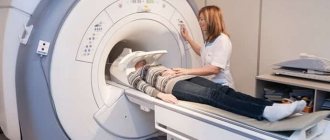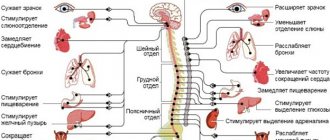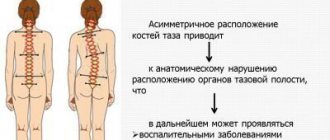In medicine, the condition when legs or arms shake is called tremor - an unconscious rhythmic movement of the limbs that occurs frequently and with varying intensity. Anyone can experience this phenomenon, regardless of age and gender. What is tremor? It can be observed during intense anxiety, fear, or after performing forceful exercise. In neurology, this condition is not considered abnormal, since it goes away after the cause that caused it is eliminated, that is, it is short-term in nature. But sometimes this phenomenon can manifest itself in serious pathologies.
Causes of tremor of the lower extremities
There is a physiological intention tremor of the legs, in which trembling occurs constantly, but it is weakly expressed, so it can only be detected under certain conditions. It does not indicate the presence of pathologies and diseases in the human body. Or trembling can develop during severe nervous tension, when norepinephrine begins to be actively synthesized in the body.
In newborns, tremors occur as a reaction to any irritant, as they have weak leg muscles. If it does not go away within three months, this may indicate brain hypoxia. This condition is often observed in premature babies. During adolescence, tremor is associated with hormonal changes.
There is also congenital tremor (Minor syndrome), which is genetically determined. The pathology appears at a young age, most often with excitement or physical stress. At the same time, sedatives and alcohol reduce their amplitude and frequency of manifestations.
Leg tremors can also occur with chronic alcoholism. This is due to the fact that acetaldehyde provokes oxidation of brain cells, as a result of which they atrophy. The neurons of the hypothalamus, thalamus, midbrain, and cerebellum, which are involved in the regulation of muscle tone and human movements, are most susceptible to negative influence.
It is not uncommon for legs to shake due to the use of certain medications. This is especially true when taking antipsychotics and corticosteroids. With this phenomenon, the human intellect does not suffer.
The causes of pathological tremor include:
- Parkinson's, Konovalov-Wilson syndrome;
- pathologies of the endocrine system;
- liver and kidney failure;
- intoxication with chemicals, salts of heavy metals;
- medication overdose;
- hereditary predisposition;
- TBI, brain tumors.
What to do if trembling appears
If the tremor is benign and occurs once, then this phenomenon is absolutely safe. After a very short time, the trembling will go away on its own. But if tremor appears quite regularly after some mental or emotional stress, then you should pay attention to the problem. Only a visit to the doctor will help to find out the reasons for the periodic occurrence of leg tremors, especially if this occurs in a calm state, and postponing such an event is not recommended.
Primary diagnosis is quite simple: tremor can be determined simply by looking at the patient’s limbs. Even if the patient’s legs do not shake during the appointment, a competent doctor will treat the patient’s complaints with all possible responsibility. After all, such a symptom may indicate very significant neurological problems.
However, it should be borne in mind that first of all it is necessary to start by turning to the simplest measures. Try to rest and start following a basic regimen; this is especially true if, in addition to tremors, there is a loss of strength and general weakness. In some situations, the doctor recommends taking the mildest sedatives. Even such measures can lead to normalization of the condition.
It is worth drawing a simple conclusion - you need to learn to relax.
Encephalopathy
One of the main reasons why legs shake after a stroke, TBI, brain tumor and multiple sclerosis is the development of encephalopathy. This is associated with cerebrovascular accident, hypotension, and atherosclerosis. Often, circulatory disorders become the cause of the appearance after forty-five years of chronic discirculatory encephalopathy or cerebral ischemia. Such diseases negatively affect the blood vessels of the brain and metabolic processes in the cells of its tissues, and contribute to the disruption of many functions of the organ, including the cerebellum. This leads to a person’s legs shaking, dizziness, and imbalance.
Psychotherapy
A trained psychiatrist often helps patients cope with tremors or the effects of stress. It helps the patient change his view of processes occurring in life that provoke a negative reaction from the body. To combat neuroses, cognitive behavioral treatment methods, sessions for the whole family and other types of therapy are used. It all depends on the problems that the individual is experiencing.
The psychotherapist often teaches patients methods of obtaining relaxation, relieving tension, and confronting negative emotions. One of the most effective ways is breathing exercises, meditation, etc.
To get rid of tremors in the body forever, you need to accurately determine the cause of this disorder. After this, suitable drugs are selected to relieve symptoms.
Hormonal system
Diseases of the endocrine system, in particular diabetes mellitus and hyperthyroidism, lead to tremors of the limbs. In hyperthyroidism, movement disorder is associated with metabolic disorders, during which the production of adrenaline, norepinephrine and dopamine, which ensure the transmission of signals to the central nervous system, is reduced.
Insufficient insulin synthesis leads to metabolic disorders and diabetic neuropathy develops, which often involves motor nerve fibers.
Also, trembling of both limbs may indicate the presence of Parkinson's syndrome, which develops as a result of the death of nerve cells that synthesize dopamine. A deficiency of this hormone leads to disruption of the pathways that provide motor activity.
Atactic tremor
Often trembling of the lower extremities occurs with cerebellar ataxia, which develops against the background of multiple sclerosis. It is the cerebellum that is responsible for a person’s ability to perform precise movements and provides muscle tone. With ataxia and degenerative processes in the cerebellum, feedback connections with the cerebral cortex are disrupted, which leads to a disorder in acts of movement.
If your limbs swell after playing sports?
Edema is caused by the accumulation of lymphatic fluid in the muscle tissue. Why do my legs swell after training? Muscle swelling can be caused by:
- Heavy loads in classes with a generally sedentary lifestyle or sedentary work. The solution is either to distribute the loads more moderately, or to rest more at the end of the workout, then the limbs will stop swelling and swelling;
- If you came to training with your feet out of narrow high-heeled shoes, wearing such shoes is your permanent habit. Tight shoes interfere with the normal outflow of blood and lymph from the feet - a direct cause of edema;
- The habit of sitting with one leg crossed, blocking the blood and lymph flow;
- Common fatigue of the lower extremities, especially if you spent the entire day before training on your feet.
To reduce the unpleasant symptoms of swelling and heaviness of the legs, do not be lazy:
- When resting, raise your legs above your chest and lie in this position for 40-60 minutes;
- You can consult your doctor about taking medications or herbal infusions that reduce swelling, and think about wearing special compression stockings or tights;
- Adjust your diet - less salt, which retains fluid, flour and sweets, replace fried with boiled and baked - and the swelling will go away quite quickly.
Restless legs syndrome (RLS)
This pathology is observed at the time when a person goes to bed. He develops tremors of the lower extremities, colic and a feeling of restlessness, so sleep is often disturbed.
RLS is a neurological disease that manifests itself in leg paresis and hyperactivity at rest or sleep. Symptoms begin to develop fifteen minutes after the person goes to bed. It manifests itself in the form of burning, tingling, trembling, and movement of the legs. This pathology is diagnosed in 10% of people worldwide. For some, the syndrome occurs once every seven days, for others - twice a week. Doctors associate the disease with the improper functioning of certain parts of the brain. This condition also develops with a lack of iron in the body and kidney failure.
Risk factors
The following are more prone to symptoms:
- suspicious, vulnerable, overly sensitive individuals;
- people who have reduced immunity;
- individuals who frequently drink coffee or alcoholic beverages;
- people who do heavy physical labor and are often overworked;
- patients whose body suffers from a lack of certain vitamins and microelements.
We recommend that you read: How to understand why the tongue goes numb with VSD?
Symptoms and signs of pathology
Having considered what tremor is, it is necessary to study the symptoms that may accompany it. In diabetes mellitus, when the concentration of sugar in the blood drops, not only the lower but also the upper limbs tremble, weakness and sweating appear. When eating sweets, the trembling goes away.
With alcoholism, the cerebellum is damaged, causing tremors, which intensifies when trying to tense the leg muscles. At rest, this phenomenon is not observed. The same symptoms are inherent in intoxication with mercury vapor.
With Parkinson's disease, the legs and arms shake at rest, but when a person performs any actions, the trembling is not so noticeable or stops altogether. The disease is also accompanied by hypokinesia, stiffness, and numbness. When walking, a person places his feet parallel to each other, he moves in small steps, while shuffling his feet, his torso is tilted forward.
Trembling fingers
Trembling in the fingers of the upper limbs may be a consequence of the specific nature of a person’s work activity. This is sometimes observed among such specialists:
- installers (when constantly working with a hammer drill)
- blacksmiths
- musicians
- stenographers, etc.
Their upper limbs are constantly at work, constantly loaded, so tremor in such specialists should be considered an occupational disease.
Fingers may also tremble when excited, which is called hysterical tremor. This indicates that the nervous system is not functioning as it should. If your fingers and/or hands tremble for a week or more, you need to contact a neurologist or therapist.
Diagnostic measures
A phenomenon such as tremor can occur in people of different ages and genders. If symptoms occur, you should consult a neurologist. He will first study the history of the disease, conduct an examination, during which he will assess motor activity, muscle condition and tone, reflexes, possible deviations during reflex movements, as well as the possible absence of reflexes.
If a person has Parkinson's disease, then the above measures will be quite sufficient. In other cases, it is possible to conduct additional examination to identify the causes of the pathology. Used in medicine:
- Electrocardiogram.
- Electroencephalogram.
- MRI and CT of the brain.
- Ultrasound angiography.
- Laboratory tests of blood and urine.
- Study of thyroid hormones.
- Ultrasound of the thyroid gland.
Based on the examination results, the cause of the disease is determined and appropriate treatment is prescribed. In this case, your doctor will tell you in detail what to do if your legs are shaking.
How to treat hand tremors in old age
If you notice the consequences of the test in yourself or an elderly relative, then come to an appointment with a neurologist. Based on an examination and an accurate diagnosis, he will offer an individual treatment regimen. It may include: medications, hydrotherapy, surgery, treatment with unconventional methods (bees and leeches).
Leave a request for selection of a boarding house
for an elderly person with hand tremors
Operational event
Manipulation is carried out in rare cases when a conservative course has not brought good results. The surgical method involves inserting a graft into the thalamus of the brain. Intervention can occur in a variety of ways and includes:
- Ultrasound ablation. No intracranial access required. Directional waves are used.
- Thalamotomy. The tremor is reduced by temporarily installing a thin wire.
- Gamma knife action (exposure to radiation rays on thalamic tissue).
- Stimulation of deep structures (introduction of thin electrodes deep into the brain).
Therapy
Treatment for tremor will depend on the causes of its development. For one-time manifestations of pathology, medications are not prescribed. In this case, it is recommended to eliminate the consumption of coffee and strong black tea, alcoholic beverages and drugs, reduce physical activity, rest, and avoid stressful situations and emotional stress.
If a person’s legs shake when he stands, and this happens due to strong anxiety or stress, then the doctor prescribes sedatives. For the treatment of newborns, medications are prescribed that help improve the supply of oxygen to the blood and tissues of the body.
Parkinson's syndrome, intoxication, thyroid pathologies, sclerosis require long-term therapy. The doctor may prescribe the following medications: Clonazepam, Xanax or Primidone. Self-medication in this case is unacceptable; only a doctor can select the correct dosage of medications and determine the duration of therapy.
It is also important to normalize blood pressure using antihypertensive and antiarrhythmic drugs. The drug “Ginkgo Biloba” will help normalize cerebral circulation; it is an antioxidant, increases vascular tone, improves blood flow, and the synthesis of neurotransmitters. Since this drug is of herbal origin, it must be taken for at least three months. Also in this case, Piracetam, Pyroxil, and Phenibut can help. Treatment with such drugs should be carried out for one and a half months.
If the thyroid gland malfunctions, the endocrinologist develops appropriate treatment. In severe cases, surgical removal of the gland is performed.
For congenital Minor disease, treatment is usually not expected. Sometimes doctors may prescribe vitamin B6 as intramuscular injections for one month. The course of such therapy should be carried out twice a year.
Treatment of weakness in the limbs
The problem must be treated depending on the diagnosed disease. It is aimed at eliminating the root causes of pathology. Your doctor may recommend that you:
- take a course of exercise therapy aimed at working out the necessary muscles;
- treatment with drugs aimed at normalizing blood supply to the brain and stimulating its activity;
- medications to remove toxins from the body;
- for infections, therapy with antibacterial agents;
- stimulation of neuromuscular activity through procedures and pharmacology.
In case of severe pathologies (heart attack, stroke), treatment is carried out only in a hospital. Sometimes the patient needs to undergo local surgery to relieve discomfort - to remove an abscess, tumor or hematoma. Depending on the situation, such an intervention can be performed under local or general anesthesia.
Symptomatic treatment
To eliminate unpleasant symptoms, medications from the beta blocker group are used in medicine. They are also used in the treatment of hypertension, arrhythmia and heart attack. These drugs block the connection of adrenaline with other hormones and reduce the reaction to stress. The drug commonly used is Propranolol. Anticonvulsant medications may also be prescribed. But such medications should not be taken while pregnant and breastfeeding. In addition, there are some contraindications. Therefore, only a doctor can prescribe the appropriate drug.
Medicines can be supplemented with alternative medicine. Your doctor may recommend taking soothing herbal teas, valerian, or motherwort. Ginseng tincture has proven itself well. It is recommended to use twenty drops three times a day, this will help reduce the manifestation of pathology. All traditional medicine that is intended to be used must be approved by a specialist.
Therapy for Parkinson's syndrome
This disease is treated symptomatically using many drugs. The main one is Levodopa, it is able to eliminate tremors of the limbs. You need to take half a tablet per day or every other day. This product has side effects.
The drug Pramipexole is also effective; it stimulates dopamine receptors. One tablet is prescribed once a day. The doctor may increase the dosage once every seven days. But this drug has many side effects, including the appearance of suicidal thoughts. Therefore, treatment should be carried out under supervision.
Cyclodol has virtually no side effects. It eliminates trembling in the legs and is used not only in the treatment of Parkinson's disease, but also other pathologies. The drug is not prescribed for hypertension.
Trembling hands and dizziness
We feel comfortable in space thanks to receptors located in the tube space of the inner ear. The signal from there goes to the brain, where it is processed, giving us the opportunity to determine the position of our own body in relation to other objects (furniture, other people, buildings, etc.).
If any pathology has damaged these receptors, then objects seem to rotate before our eyes, everything floats before our eyes. Dehydration can also lead to dizziness combined with tremors in the upper extremities. In parallel, there may be the following symptoms:
- noise in ears
- rapid heartbeat
- weakness
- vomit
Prevention
For Parkinson's syndrome and multiple sclerosis, preventive measures are useless. But some doctors say that caffeine can reduce the occurrence of tremors.
If tremors are caused by alcohol, stress, or physical activity, prevention is quite possible. It consists of rest, leading a healthy lifestyle, avoiding emotional stress, and moderate physical activity.
Diseases of the endocrine system must be treated promptly so that limb tremors do not develop. In this case, drugs should only be prescribed by a doctor; self-medication is unacceptable. It is important to eat properly so that the body receives a sufficient amount of all necessary elements and vitamins.
What is limb tremor in the elderly, and why does it happen?
Trembling of fingers, hands, forearms and even the head is an involuntary rapid vibration of these parts of the body, occurring due to muscle contraction. It is caused by a time delay in corrective signals, so movement or maintaining a pose depends on the restructuring of the body. Intensification of symptoms can be due to a nervous breakdown, psychological agitation, overwork, and severe impairment of the nervous system.











